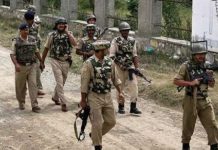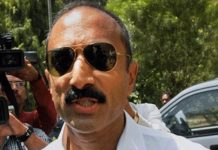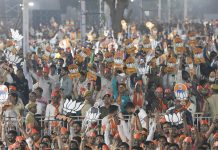
Post the “Government of India Act 1935”, the then British-Indian government had appointed distinguished men and women of high calibre, and unimpeachable integrity as the Governors of the Indian provinces. But there has since been much diminution in the calibre of the Governors who subsequently held the exalted position, writes Raj Kanwar
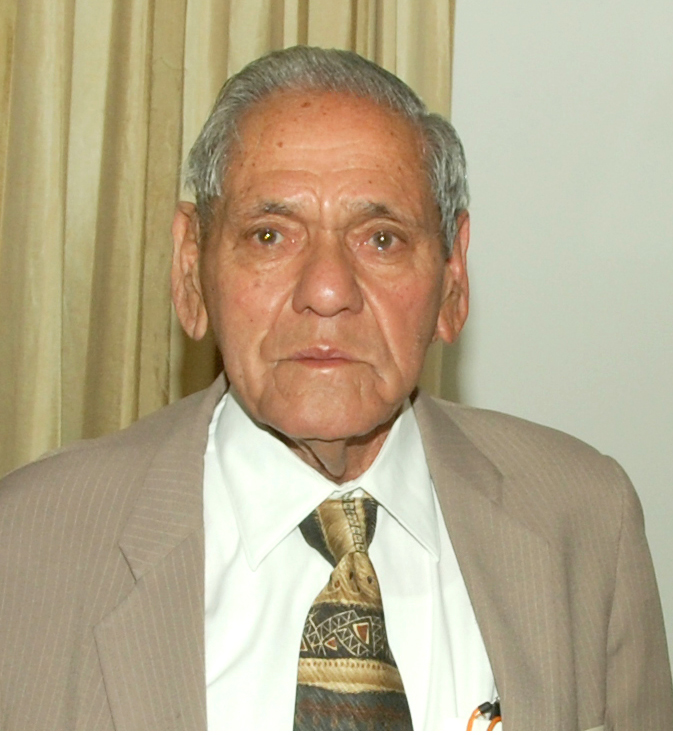 Eminent women such as Sarojini Naidu, Vijaya Lakshmi Pandit and Padmaja Naidu had performed their gubernatorial duties with much dignity and poise. Post Independence, great men like KM Munshi, Sir HP Mody, VV Giri, Sir Girja Shankar Bajpai, Dharam Vira, Govind Narain and their ilk walked like Colossus in their respective Governor Houses.
Eminent women such as Sarojini Naidu, Vijaya Lakshmi Pandit and Padmaja Naidu had performed their gubernatorial duties with much dignity and poise. Post Independence, great men like KM Munshi, Sir HP Mody, VV Giri, Sir Girja Shankar Bajpai, Dharam Vira, Govind Narain and their ilk walked like Colossus in their respective Governor Houses.
But alas there has since been much diminution in the calibre of the Governors who subsequently held the exalted position or are currently occupying Raj Bhawans in the capitals of various states.
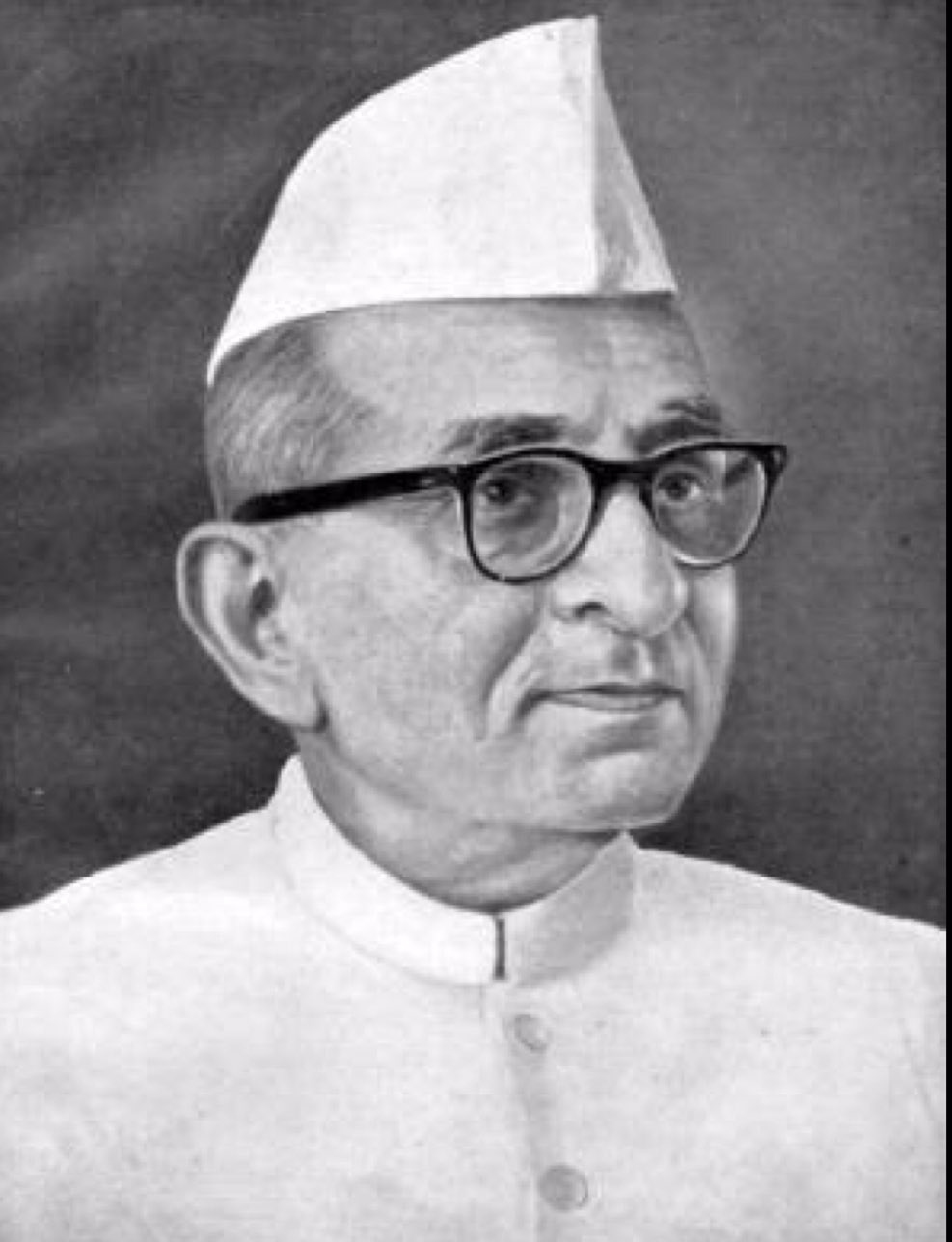 Who is then ‘qualified’ to become a state Governor? “A citizen of India who is at least 35 years old,” says the Constitution. It doesn’t lay down any qualifications as to the education or experience. By this yardstick, almost every third Indian is constitutionally eligible to be appointed a Governor. As far as I can recall, no one below the age of 60 or so has ever been made a state Governor. Ironically, this relatively young age of 60 is intended for those bureaucrats who had managed to earn such a highly prized sinecure for the “services rendered” in the course of their respective careers. The politician, who is past his or her ‘use-by date’, too is a favorite for the tenancy of a Raj Bhawan. Quite often, retired army generals or their counterparts from Navy or Air Force also got a look in and given the gubernatorial assignment.
Who is then ‘qualified’ to become a state Governor? “A citizen of India who is at least 35 years old,” says the Constitution. It doesn’t lay down any qualifications as to the education or experience. By this yardstick, almost every third Indian is constitutionally eligible to be appointed a Governor. As far as I can recall, no one below the age of 60 or so has ever been made a state Governor. Ironically, this relatively young age of 60 is intended for those bureaucrats who had managed to earn such a highly prized sinecure for the “services rendered” in the course of their respective careers. The politician, who is past his or her ‘use-by date’, too is a favorite for the tenancy of a Raj Bhawan. Quite often, retired army generals or their counterparts from Navy or Air Force also got a look in and given the gubernatorial assignment.
Axe falls on RSS-backed Governors
The controversy relating to the qualifications of a Governor had taken the centre stage in May 2004 when the Manmohan Singh government sacked four Governors namely, Vishnu Kant Shastri (Uttar Pradesh), Kailashpati Mishra (Gujarat), Babu Parmanand (Haryana) and Kidarnath Sahni (Goa). Incidentally, all the sacked Governors were hardcore RSS pracharaks, and had been appointed by the previous National Democratic Alliance (NDA) government headed by Atal Bihari Vajpayee. Their replacements were largely chosen from among those Congressmen who had lost in the elections held earlier.
The former Home Minister Buta Singh was made the Governor of Bihar while R.L. Bhatia became the Kerala Governor. While Balram Jakhar, a former Speaker of the Lok Sabha, was appointed as the Governor of Madhya Pradesh. B.L. Joshi, a former police officer, was consecutively made Governor of Uttarakhand and Uttar Pradesh while the chartered accountant and freedom fighter Rameshwar Thakur was appointed as the Governor of Odhissa. Likewise, Nawal Kishore Sharma who too was a ‘lost warrior’ was made the Governor of Gujarat.
Choice on whims and fancies of the rulers
 The choice of the new Governors was purely on the whims and fancies of the then powers that be. More often, some of the choices came as a surprise, but a little digging showed a ‘godfather’ lurked somewhere in the background. Fortuitously, the choice of the Governors in the first two decades after 1947 had broadly fallen on eminent public men and women. It needs to be noted that the first UP Governor was no less a person than Sarojini Naidu, famously known as the ‘Nightingale of India’. Unfortunately, she died in harness in 1949. Other equally eminent women who then adorned the gubernatorial offices were Vijaya Lakshmi Pandit (Maharashtra), Padmaja, Sarojini Naidu’s daughter (West Bengal), and Sharda Mukherjee (Gujarat), wife of Air Marshal Subroto Mukherjee.
The choice of the new Governors was purely on the whims and fancies of the then powers that be. More often, some of the choices came as a surprise, but a little digging showed a ‘godfather’ lurked somewhere in the background. Fortuitously, the choice of the Governors in the first two decades after 1947 had broadly fallen on eminent public men and women. It needs to be noted that the first UP Governor was no less a person than Sarojini Naidu, famously known as the ‘Nightingale of India’. Unfortunately, she died in harness in 1949. Other equally eminent women who then adorned the gubernatorial offices were Vijaya Lakshmi Pandit (Maharashtra), Padmaja, Sarojini Naidu’s daughter (West Bengal), and Sharda Mukherjee (Gujarat), wife of Air Marshal Subroto Mukherjee.
In the next round of women Governors, Ram Dulari Sinha (Kerala), Rajendra Kumari Bajpai (Puducherry), Sheila Kaul (Himachal Pradesh), Rama Devi (both Himachal Pradesh and Karnataka), Pratibha Patil (Rajasthan) and Kamla Beniwal (Gujarat) were the Congress leaders of lesser prominence who then needed to be rehabilitated. They neither distinguished nor disgraced themselves and quietly demitted their offices when their terms ended. Sarla Grewal née Khanna was perhaps the first woman civil servant to have been made a Governor. She was in fact the second woman in the country to have joined the IAS in 1952 and had retired as the Cabinet Secretary. I had known her briefly when she was the deputy commissioner in Shimla. The appointment of VS Rama Devi as the Governor of Himachal Pradesh in 1997 too had attracted unseemly attention since earlier she had held, albeit briefly, the office of the Chief Election Commissioner of India.
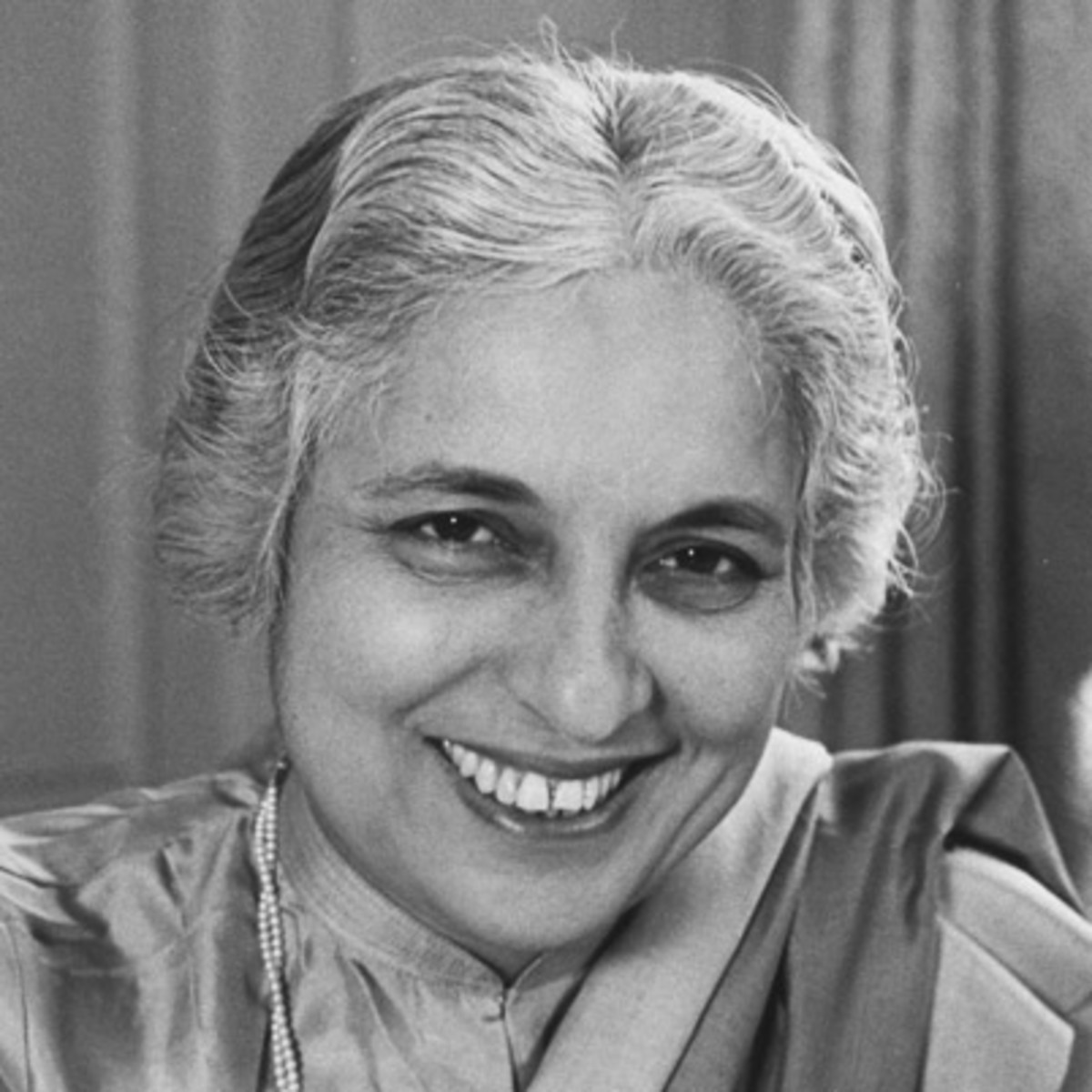 Even, 10 years before India became independent, Vijaya Lakshmi Pandit had emerged as an articulate politician, and became the first woman to have been twice made a minister in the United Provinces (UP). She was also elected in 1946 to the Constituent Assembly. Following India’s independence in 1947, Pandit entered the diplomatic service and became India’s Ambassador to the Soviet Union; she had remained in that post for two years until 1949. Her next assignment was as India’s Ambassador to the United States from 1949 to 1951. From 1955 to 1961, Pandit occupied many important diplomatic posts including that of India’s High Commissioner to the United Kingdom. Earlier in October 1946, she had become the first woman to head a delegation to the United Nations General Assembly. And then seven years later in 1953, she earned the unique distinction of becoming the first woman President of the UN General Assembly.
Even, 10 years before India became independent, Vijaya Lakshmi Pandit had emerged as an articulate politician, and became the first woman to have been twice made a minister in the United Provinces (UP). She was also elected in 1946 to the Constituent Assembly. Following India’s independence in 1947, Pandit entered the diplomatic service and became India’s Ambassador to the Soviet Union; she had remained in that post for two years until 1949. Her next assignment was as India’s Ambassador to the United States from 1949 to 1951. From 1955 to 1961, Pandit occupied many important diplomatic posts including that of India’s High Commissioner to the United Kingdom. Earlier in October 1946, she had become the first woman to head a delegation to the United Nations General Assembly. And then seven years later in 1953, she earned the unique distinction of becoming the first woman President of the UN General Assembly.
Gradual Erosion
Unfortunately, there had been gradual erosion in the ‘qualifications’ of woman governors after the first two hoary decades. Imagine the likes of the lucky Pratibha Patil, who later rose on to become even the President of India. She did not distinguish herself as a Governor. The less said the better about her performance as the President. Kamla Beniwal was in the eye of storm in the Rs. 1000-crore Jaipur Development Authority land scam. Fortuitously, Vijaya Lakshmi Pandit and Margaret Alva perhaps were the only women Governors who had bestowed much dignity and grace upon their offices.
The choice and the “qualifications” of the Governors of late have become somewhat questionable since those appointments are not strictly made on merits; the only criterion is the “loyalty and the services rendered” by a favourite, and the need to reward and rehabilitate him or her. Even though the office of Governor, by and large, is symbolic, yet its importance simply cannot be sidelined. Governors have to possess high educational qualifications, and innate charm and grace; they also must be men and women of unimpeachable background.
Highly educated at helm
Those earlier Governors were refined and highly educated men of great distinction. Consider stalwarts like Dr. KM Munshi, Sir HP Mody, VV Giri who had acquitted themselves with much grace and dignity during their respective tenures as the Governor of UP. Dr. Munshi was the profoundest of them all, and as the ex-officio Chancellor of the universities in the state, he had organized the first “Inter-University Chancellor’s Camp” in June 1953 at which outstanding students from the various universities in the state were invited to spend a fortnight with him at Raj Bhawan in Nainital.
Some other notable Governors in those early years were eminent civil servants like Sir Girja Shankar Bajpai, Dharam Vira and Govind Narain. Additionally, many outstanding leaders such as MM Pakwasa, Sri Prakasa, Raja Maharaj Singh, Pattabhi Sitaramayya, Bhagwat Dayal Sharma, Kailash Nath Katju, Asaf Ali, Sadiq Ali, Shankar Dayal Sharma, Bhim Sain Sachar et al were also made Governors. Other equally well known Governors were Gurmukh Nihal Singh, Sampurnanand, Sardar Hukam Singh, Balram Jakhar and some more of similar calibre.
The appointment which raised hackles
THE appointment of Ashwani Kumar, a former CBI director, as Governor of Nagaland in March 2013 was then described by many critics as “unfortunate and improper”. Almost all the opposition parties had then accused CBI of being “a handmaiden and ‘B’ team of the government”. Thus the choice of Ashwani Kumar fell flat on the yardstick of “propriety”.
And now the Modi era
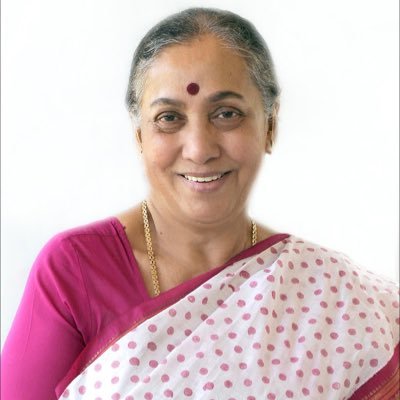 The great success of Bharatiya Janata Party under the leadership of Narendra Modi in 2014 general elections had generated an exciting sense of euphoria among the BJP leaders and the cadre. Some of the more ambitious among them started angling for gubernatorial offices. The then Governors appointed by the outgoing UPA government were indirectly told to resign. Five of them: BL Joshi (Uttar Pradesh), MK Narayanan (West Bengal), Shekhar Dutt (Chhattisgarh), Ashwani Kumar (Nagaland) and BV Wanchoo (Goa) resigned on their own accord. Two of them, namely HR Bhardwarj (Karnataka) and Devanand Konwar (Tripura) had retired a month before, while Lt. Governor of Puducherry Virendra Kataria, who must have dilly-dallied a bit, was shown the door by the government.
The great success of Bharatiya Janata Party under the leadership of Narendra Modi in 2014 general elections had generated an exciting sense of euphoria among the BJP leaders and the cadre. Some of the more ambitious among them started angling for gubernatorial offices. The then Governors appointed by the outgoing UPA government were indirectly told to resign. Five of them: BL Joshi (Uttar Pradesh), MK Narayanan (West Bengal), Shekhar Dutt (Chhattisgarh), Ashwani Kumar (Nagaland) and BV Wanchoo (Goa) resigned on their own accord. Two of them, namely HR Bhardwarj (Karnataka) and Devanand Konwar (Tripura) had retired a month before, while Lt. Governor of Puducherry Virendra Kataria, who must have dilly-dallied a bit, was shown the door by the government.
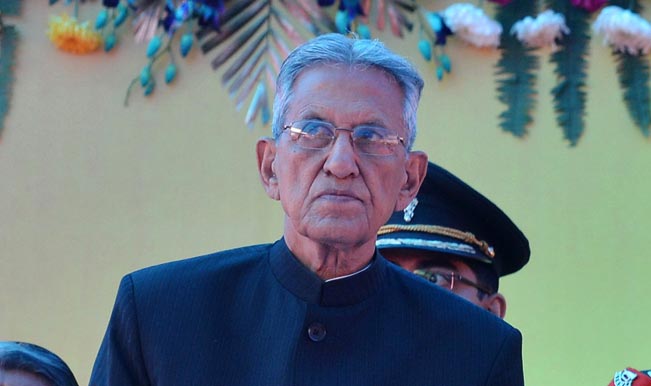 Those vacancies were promptly filled up by eager beavers and go-getters. Kalyan Singh, who was earlier the chief minister of Uttar Pradesh, was appointed the Governor of Rajasthan, and Mridula Sinha, who was at one time the president of BJP Mahila Morcha, got Goa. Likewise, Vajubhai Rudabhai Vala, once the Speaker of the Gujarat Assembly, and Vidyasagar Rao, who had served as a Union minister of State in the Ministry of Home Affairs in Atal Bihari Vajpayee government, were respectively made Governors of Karnataka and Maharashtra.
Those vacancies were promptly filled up by eager beavers and go-getters. Kalyan Singh, who was earlier the chief minister of Uttar Pradesh, was appointed the Governor of Rajasthan, and Mridula Sinha, who was at one time the president of BJP Mahila Morcha, got Goa. Likewise, Vajubhai Rudabhai Vala, once the Speaker of the Gujarat Assembly, and Vidyasagar Rao, who had served as a Union minister of State in the Ministry of Home Affairs in Atal Bihari Vajpayee government, were respectively made Governors of Karnataka and Maharashtra.
The new State of Uttarakhand
The new state of Uttarakhand was fortunate to have had a veteran politician Surjit Singh Barnala, as its first Governor on 9 November 2000; he was formerly the chief minister of the Punjab. His tenure in the state had just lasted over two years when he was transferred to Chennai as the Governor of Tamil Nadu where he spent nearly seven years. Barnala was succeeded by Sudarshan Agarwal, who was the secretary general of the Rajya Sabha for nearly 12 years. Agarwal’s tenure of less than five years was eventful in many ways. He will, however, be remembered for his contribution in the field of education and health. His Him Jyoti Boarding School that provides free education to the poor girls from the hills is a living testimony to his tenure.
A retired police officer BL Joshi then took over on 29 October 2007 as the third Governor of this young state. He was in Dehra Dun barely for two years before he was transferred to Uttar Pradesh as the Governor. Incidentally, he and I became good friends, and that friendship even continued when he moved to Lucknow’s Raj Bhawan. Post-retirement, Joshi returned to his home state Rajasthan, but alas did not live long to enjoy his retired life.
A distinguished leader in her own right, Margaret Alva had become the state’s fourth Governor in August 2009. She had been both a prominent Congress leader and distinguished Parliamentarian for 30 long years, and conducted her affairs with great dignity and poise, and made many friends including this writer. Her tenure lasted less than three years before she retired.
A lacklustre tenure
Aziz Qureshi, a former politician from Madhya Pradesh, became Uttarakhand’s fifth Governor on 15 May 2012. His lacklustre tenure of fewer than three years had become controversial in a different sense. Following the installation of the Narendra Modi government in May 2014, Qureshi had gone to the Supreme Court alleging that the Home secretary Anil Goswami had asked him to resign from the post or face removal by the Centre. That claim by Qureshi was vehemently denied by the Union Home minister Rajnath Singh adding that “there was no move to remove him since he held a constitutional post at the pleasure of the President.”
Dr. Paul’s term was unique
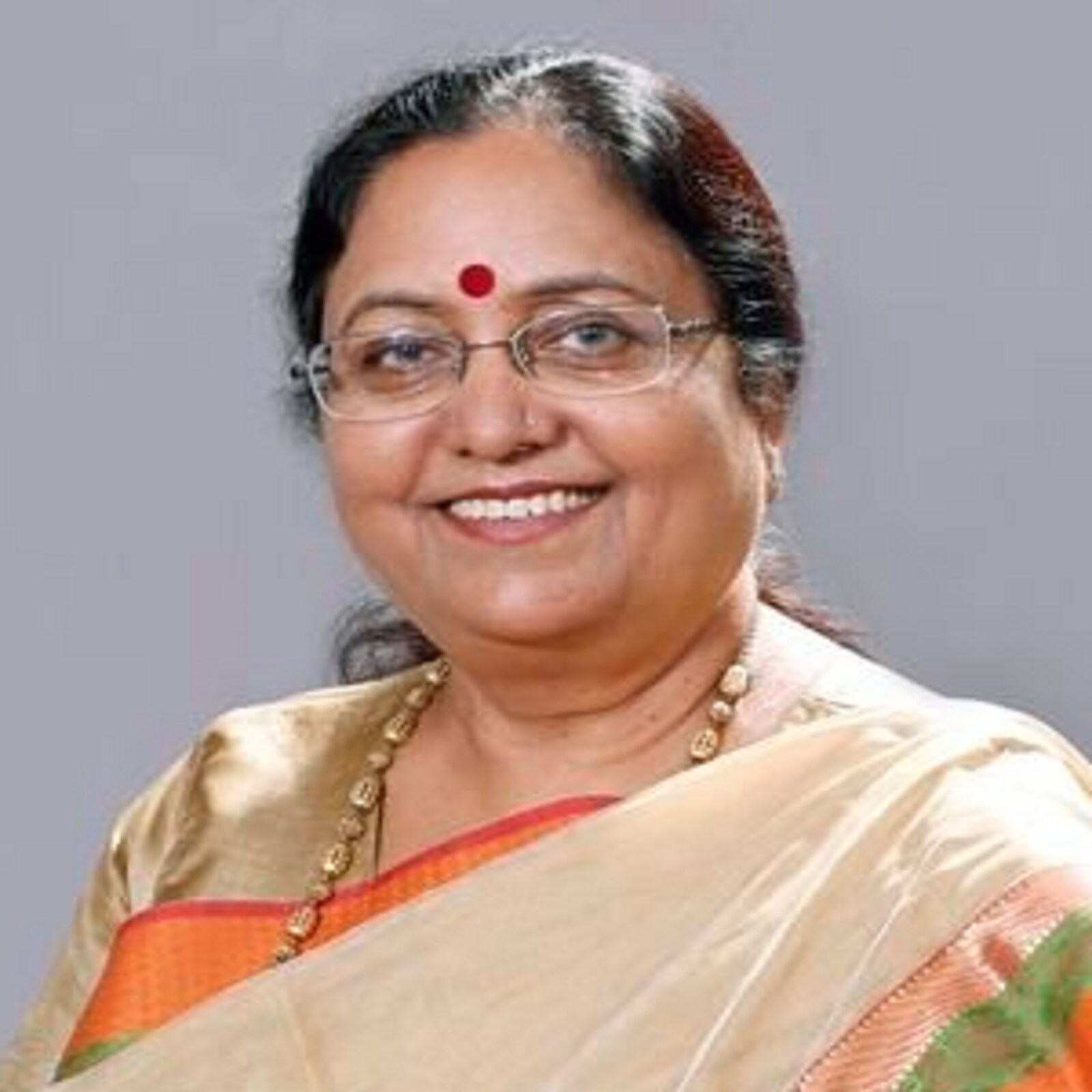 There was a good deal of relief in official and political circles when Qureshi’s controversial tenure ended on 8 January 2015 with the appointment of Dr. Krishan Kant Paul as Uttarakhand’s sixth Governor. Dr. Paul’s tenancy at Raj Bhawan was very much like a summer shower on a parched land. An officer of the Indian Police Service belonging to 1970 batch of AGMUT cadre, Dr. Paul had spent much of his police career in Delhi, the Andaman & Nicobar Islands, and the beautiful hills of the Northeast. During his 37-year long and distinguished career, he was involved in the investigation of several sensitive national and international cases that included the assassination of Indira Gandhi, and the Cricket match fixing controversy.
There was a good deal of relief in official and political circles when Qureshi’s controversial tenure ended on 8 January 2015 with the appointment of Dr. Krishan Kant Paul as Uttarakhand’s sixth Governor. Dr. Paul’s tenancy at Raj Bhawan was very much like a summer shower on a parched land. An officer of the Indian Police Service belonging to 1970 batch of AGMUT cadre, Dr. Paul had spent much of his police career in Delhi, the Andaman & Nicobar Islands, and the beautiful hills of the Northeast. During his 37-year long and distinguished career, he was involved in the investigation of several sensitive national and international cases that included the assassination of Indira Gandhi, and the Cricket match fixing controversy.
His tenure as the Governor was unique in more ways than one. At my suggestion, he organized at Raj Bhawan monthly get-togethers of well known journalists, noted authors like Ruskin Bond, Stephen Alter, Jaskiran Chopra, Satish Sharma et al that were lapped up by the literati. The Independence Day, the Uttarakhand Day and the Republic Day events on the expansive grounds of Raj Bhawan that were largely attended by prominent citizens including senior civil and military officials were among the most looked forward to functions of his tenure. He also occasionally invited distinguished writers, scientists and important officials at “Sit-Down” dinners and lunches.
Incidentally, his wife Omita too was an accomplished civil servant in her own right. An officer of the Indian Information Service, she had been associated in various capacities with President Pranab Mukherjee, finally retiring as his Secretary. She and Dr. Paul were classmates from the undergraduate level till they both were able to secure their respective Master’s degrees in Chemistry; and happily it was the personal chemistry between these two that caused them to tie the marital knot on 9 May 1970.
A controversial development
The otherwise smooth tenure of Dr. Paul suddenly turned controversial on 18 March 2016 when nine rebel Congress MLAs together with 27 BJP legislators met him and sought the dismissal of the then Congress government headed by chief minister Harish Rawat. But the incumbent chief minister who met him the following day insisted that he enjoyed overall majority in the 70-seat Assembly. Dr. Paul then asked him to prove his majority by 28 March.
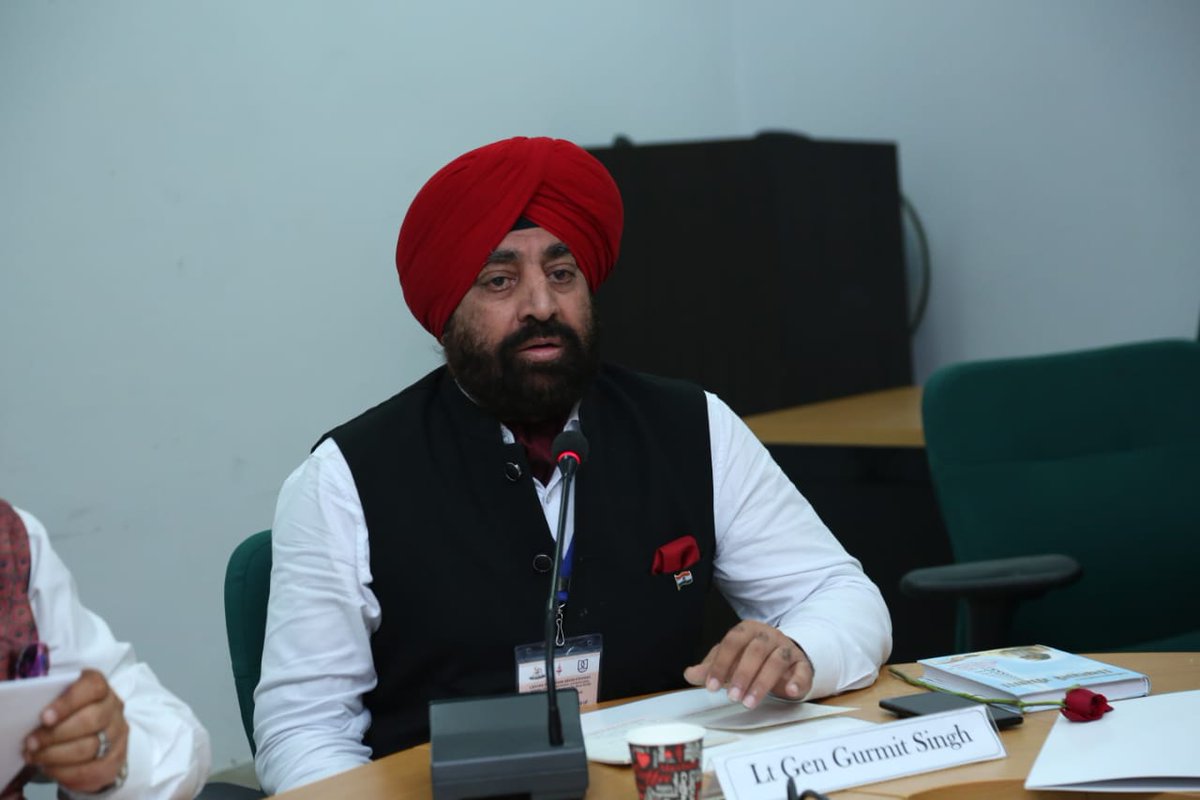 Both the Congress and the BJP separately met President Pranab Mukherjee, and sought his intervention in resolving the political crisis in the state. The BJP delegation requested the President to get the floor test advanced from 28 March to 18 March. The Party also asked the President to direct the Governor to immediately dismiss the Rawat government. But a Congress delegation, led by Ghulam Nabi Azad strongly countered the BJP’s contention. Three developments then occurred. (i) the day before the Rawat government was to face the floor test, President’s Rule was imposed in the state, and the Assembly placed under ‘suspended animation’, (ii) a Division Bench of the Uttarakhand High Court quashed the imposition of the President’s Rule, and ordered a floor test on April 29, and (iii) the floor test was accordingly held and the results put in a sealed cover to be submitted to the Supreme Court. However, the Congress had claimed a victory, and BJP conceded defeat in the floor test.
Both the Congress and the BJP separately met President Pranab Mukherjee, and sought his intervention in resolving the political crisis in the state. The BJP delegation requested the President to get the floor test advanced from 28 March to 18 March. The Party also asked the President to direct the Governor to immediately dismiss the Rawat government. But a Congress delegation, led by Ghulam Nabi Azad strongly countered the BJP’s contention. Three developments then occurred. (i) the day before the Rawat government was to face the floor test, President’s Rule was imposed in the state, and the Assembly placed under ‘suspended animation’, (ii) a Division Bench of the Uttarakhand High Court quashed the imposition of the President’s Rule, and ordered a floor test on April 29, and (iii) the floor test was accordingly held and the results put in a sealed cover to be submitted to the Supreme Court. However, the Congress had claimed a victory, and BJP conceded defeat in the floor test.
An uneventful tenure
Baby Rani Maurya was state’s seventh Governor. After the highly acclaimed tenure of Dr. Paul, her appointment to this gubernatorial post was something of an anti-climax. Ironically, her elevation came as a big surprise even to her friends, kin and BJP cadre in Agra. She was the Mayor of Agra from 1995 to 2000. Later in 2007, she had contested elections to the state Assembly as a BJP candidate but lost. Consequently, she was made one of the secretaries of the State BJP. Incidentally, she was the treasurer of Scheduled Caste Morcha when Ramnath Kovind was its President. Thus it was her proximity to Kovind that came handy when he became India’s President. And that possibly explains her appointment as Uttarakhand’s Governor. Her tenure, to say the least, was uneventful; she had dispensed with all those public get-togethers at Raj Bhawan on Republic and Independence Days at which a cross section of prominent citizens and officials were invited. By and large, she remained a RSS/BJP karyakarta, and perhaps flocked only with “birds of the saffron feather”.
However, she resigned on 8 September 2021 for no obvious rhyme or reason; she had by then completed only two of her five-year term as the Governor. Later in the UP state general elections, she was elected as an MLA hoping to be made a minister with an important portfolio to boot. But alas her dream remained just a dream. From the exalted stature of the Governor of a state, she is today just one of the 403 MLAs in UP. What a fall in political fortune for “our Baby Rani”.
Army General takes charge
Thus the appointment of Lt. Gen. Gurmit Singh, PVSM, UYSM, AVSM, VSM as the eighth Governor of the State on 9 September 2021 came as a big relief. A much decorated officer, Gen. Singh had superannuated from the Army on 31 January 2016. During his nearly four decades of service, he had held the prestigious appointments of Adjutant General and Corps Commander of Strategic XV Corps that overlooks the Line of Control in Kashmir. As the Additional Director General of Military Operations, he had also handled China’s operational and military-strategic issues. Additionally, Gen. Singh had represented the Indian Army at the numerous talks with China in respect of the disputed border cases. In the course of his distinguished military career, Gen. Singh has had the opportunity of twice visiting Pakistan, as also Myanmar.
Just within 10 months of his tenure as the State’s eighth Governor, Gen. Singh has gained much popularity particularly among his co-religionists and Punjabi brethren. He is equally popular both among the elite and the hoi polloi too. Incidentally, I was among the first few Dehra Dun residents who have had the unique privilege of meeting Gen. Singh when I presented him my two Books. That was on 21 September last year. In his very first letter expressing his pleasure at meeting me, he had written, “Your wisdom, depth and intellect are deeply endearing. It would be a pleasure interacting with you in the coming times.” He had also generously sent me special birthday greetings together with a cake that was specially delivered at my residence on 8th October morning by a constable from Hathibarkala Police Post. I was then simply overwhelmed by his magnanimity.
Unfortunately and inexplicably, a sudden coldness seems to have now descended on the Raj Bhawan vis-à-vis poor me. For the past few weeks, my mails and phone calls to the Governor himself and his ADCs have remained unanswered. Once a cherished guest, I seem to have all of a sudden become a persona non grata at the Raj Bhawan. All of this saddens me much.
Army Generals as Governors
Gen Singh however was not the first Army general to have been made a Governor. The successive governments in India were generally inclined to select retired Army generals as the State Governors. It was perhaps more a matter of convenience than strategy. Or even both as in the case of Northeastern and other strategic states. Hence, the appointment of Lt. Gen. Bakshi Krishan Nath Chhibber as the first Governor of Punjab in 1994 did not come as a surprise. He had remained in office for five years. Likewise, Lt. Gen. J.F.R. Jacob was successively the Governor of two states; Goa’s Governor in 1998 just for 18 months, and then the Governor of Punjab for nearly three years and a half from November 1999 to May 2003.
Another general, Lt. Gen. Krishna Mohan Seth was appointed as the Governor of the strategic state of Tripura in June 2000; he remained in that position until May 2003. He was also the Governor of Chhattisgarh — the second Governor of the new state — from June 2003 to January 2007. The next was the former Army Chief, Gen. Joginder Jaswant Singh who was the Governor of Arunachal Pradesh from January 2008 to May 2013. Incidentally, Gen. Singh was the first Sikh Chief of the Army Staff, and the sixth Army General to have occupied the gubernatorial office.
Other Army generals who have had the distinction of occupying Raj Bhawans in various states were Gen SF Rodrigues, Lt Gen SK Sinha, Lt Gen Ajay Singh and Lt Gen MM Lakhera. The latest to join the galaxy of the Army generals is Lt. Gen. Gurmit Singh who enjoys the unique honour of being the first Army general to become the Governor of our state of Uttarakhand.
Now considering the “qualifications” of about 100 past and current Governors, it looks that anyone of us would easily “qualify” to be appointed as a Governor. In fact, the qualifications of many of us are far superior to those lucky “worthies” except that we lack a “godfather”. It is thus important that a detailed “code of selection” be put in place for the Governors.
Footnote: Bhagat Singh Koshiyari is a hardcore Rashtriya Swayamsevak Sangh (RSS) karyakarta. He was imprisoned for participating in agitation against the Emergency. He has had an eventful political career both in the undivided Uttar Pradesh and Uttarakhand holding important positions in the two states. As the incumbent Governor of Maharashtra, he had played his cards adroitly and somehow managed to install a coalition government headed by Shiv Sena dissident leader Eknath Shinde and BJP stalwart Devendra Fadnavis.







